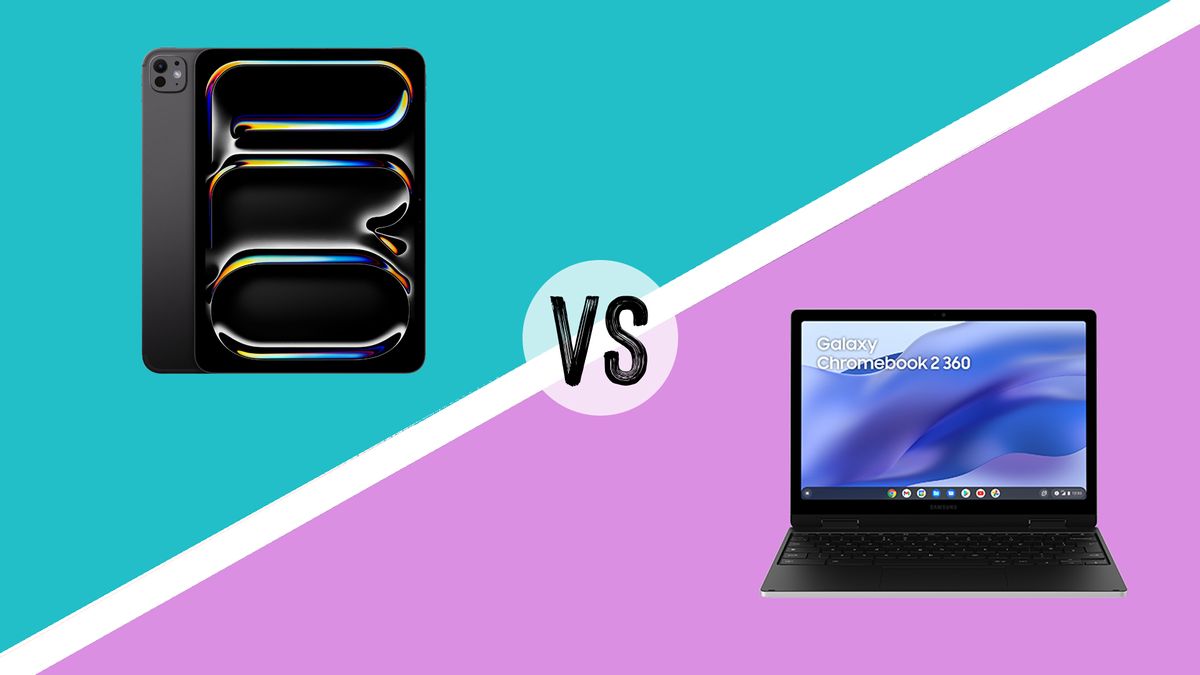Many people have found themselves wondering whether a Chromebook or a tablet is best for their needs, and there are plenty of reasons to compare them. They’re capable of similar tasks, can come with similar displays and abilities, and often end up costing about the same as well. But whatever your budget, it’s worth thinking about which product is best for you.
You might find that a tablet offers a more portable package and better movie-watching experience thanks to its smaller size and the fact that many tablets such as the best iPads for drawing contain better display tech than you’ll find in a Chromebook. Yet the best Chromebooks have strengths of their own, such as how their attached keyboards make word processing much more comfortable.
With this guide, we aim to make your choice simple. We’ve compared Chromebooks and tablets across several key metrics, including design, performance, features and more. By the end, you should have a better idea of which one best suits your needs. For further comparisons, see our laptop vs Chromebook guide, and you also might want to look at our best laptops for graphic design post.
Chromebook vs tablet: design

You might think that Chromebooks and tablets have very different designs – and in some cases, they do. But there are also plenty of similarities. For instance, tablets are usually a little more portable than Chromebooks due to their smaller dimensions. A tablet’s design is centered entirely on its display, meaning it can be made impressively thin and light.
A Chromebook, on the other hand, usually comes with a keyboard and trackpad attached to its screen, which adds a lot more size and bulk. It’s rare to see a tablet go larger than around 13 inches across, whereas there are plenty of Chromebooks measuring 17 inches across. If you’re after portability, then, tablets are generally the way to go.
But there’s a lot more to consider when it comes to design. The attached keyboard gives Chromebooks the edge if you want to work on your device. Sure, you can buy an external keyboard for your tablet, but that’s an extra cost that also negates much of its portability.
It’s worth noting that some Chromebooks actually have a 2-in-1 design that lets you detach their keyboards and use them as tablets. That’s a decent way to get the best of both worlds.
Winner: Draw
Chromebook vs tablet: performance

It would be easy to assume that, since Chromebooks are laptops, they offer better performance for creatives than tablets. But that’s certainly not always the case. The iPad Pro, for example, is much more powerful than many fully fledged laptops, and might be a good option if you’re thinking of carrying out a lot of demanding work. And it’s not just Apple’s tablets that bring a lot of oomph to the table – Android tablets can also be powerful, although they’re usually not quite as strong as the iPad Pro.
Chromebooks, on the other hand, are built more for more casual work, such as word processing, writing emails and watching videos online, and that’s aided by their Google-based operating system (ChromeOS) being extremely fast and lightweight.
That said, ChromeOS isn’t really made for heavy-duty workloads like video rendering and photo editing. While you might want to consider a desktop PC or one of the most powerful laptops if that’s your bag, when it comes to performance, the top-end tablets can usually handle a little more than a Chromebook, while Chromebooks offer speedy performance for more moderate needs.
Of course, performance is a sliding scale, and the cheapest tablets will likely struggle compared to a Chromebook. Make sure you do your research on the specific devices you have in mind before purchasing.
Winner: Tablets with their higher performance ceiling
Chromebook vs tablet: screen
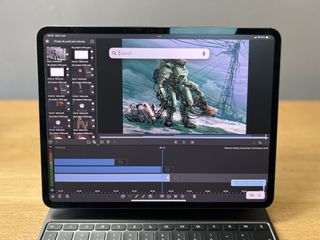
Screen quality really varies by the device you pick. The iPad Pro, for example, has an incredible display with Apple’s own Tandem OLED tech inside. A much cheaper device – whether a tablet or a Chromebook – won’t be able to come close to it, but of course Apple’s screens come with a hefty price tag too.
A key point here is that all tablets use touchscreen tech, whereas only some Chromebooks are outfitted with touchscreens. If you want to be able to interact with your device’s display in this way, you might lean more towards a tablet.
However, tablets’ smaller sizes tend to mean content is more crammed-in and shrunk-down on their displays. For a larger screen that’s a bit easier to work with, larger Chromebooks have the advantage.
Winner: Tablets thanks to technology like Apple’s Tandem OLED
Chromebook vs tablet: features
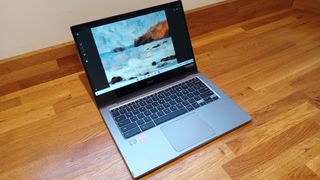
Chromebooks and tablets run on different operating systems. For Chromebooks, it’s ChromeOS, which comes with web apps and saves all your files to the cloud. For tablets, you’ll get either Android or iOS, depending on your choice. This difference will impact the range of apps available to you, so be sure to check if your favourite apps are available on your device of choice.
Hardware-wise, Chromebooks have a key advantage in terms of their ports. You usually get a lot more (and a lot more variety) than on a tablet, which is generally very limited. Conversely, tablets regularly pack in better cameras – not only are they usually higher resolution than what you find on a Chromebook, but you get two (both front- and rear-facing) compared to a Chromebook’s single front-facing lens.
Finally, both Chromebooks and tablets support styluses like the Apple Pencil, the Samsung S Pen or certain USI Chromebook options. For this, you’ll need to check compatibility – Chromebooks must have a touchscreen to work with a stylus, for example, and not all styluses will work with all tablets. See our best tablets with a stylus post for more on this.
Winner: Draw
Chromebook vs tablet: longevity
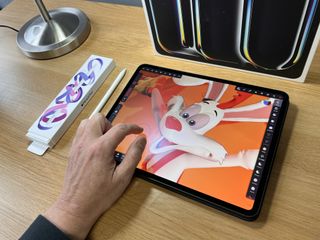
A key consideration here is how long your device will last, and one aspect of that is battery life. Every device here will vary, and that’s the case for both tablets and Chromebooks. Make sure you look up your preferred device’s battery life to get a better idea of how long it will last.
Another thing to consider is software support. Chromebooks are definitely better here, as you’ll get up to 10 years of support after purchase. Apple supports its tablets for around five years, while Android devices are a little lower. Don’t just look at software feature updates here – the amount of time you’ll get security updates is also very important.
Winner: Chromebooks due to their extensive software support and good battery life
Chromebook vs tablet: which one is right for me?
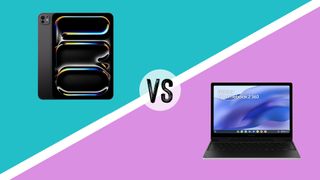
Choosing between a Chromebook and a tablet depends a lot on your needs. For instance, if you’re after a traditional laptop experience, a Chromebook is probably the better option, as it gets you a device that’s ideal for work without needing to buy any extra peripherals like a detachable keyboard.
That said, if you want a touchscreen and more portability, a tablet is generally the way to go. These devices are often better for media consumption, too, thanks to the superior displays that some tablets like the iPad Pro offer up.
Ultimately, you need to know what you want to use the device for in the first place. Once you have that knowledge, settling on whether to get a Chromebook or a tablet will become a lot easier.
